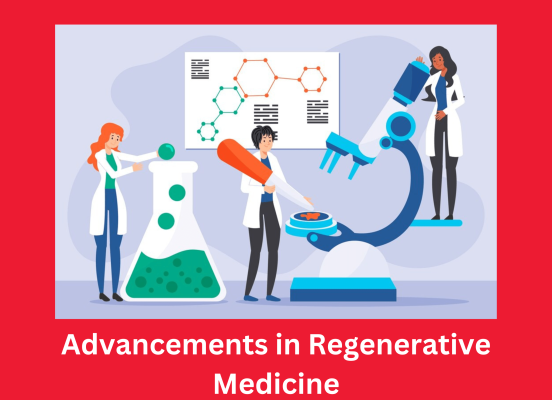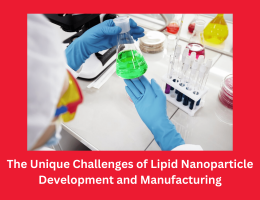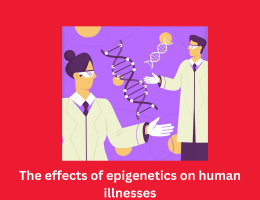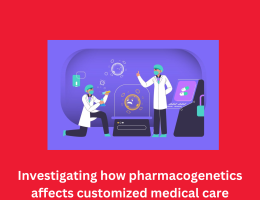
Advancements in Regenerative Medicine: Tissue Engineering, Stem Cell Therapy, and Organ Transplantation
- By admin --
- Friday, 08 Mar, 2024
Introduction:
Regenerative medicine has the capability to convert healthcare by means of utilising the frame's herbal capacity to restore and regenerate itself. This article examines the most current traits in regenerative medicinal drug, with an emphasis on organ transplantation, tissue engineering, and stem cellular treatment and its potential to repair and regenerate broken tissues and organs.
Tissue Engineering:
The technique of tissue engineering includes combining cells, biomaterials, and biochemical signs to create functioning tissues or organs. Modern dispositions in mobile biology, bioengineering, and biomaterials research have made it viable to create complex tissue engineering strategies for changing or mending broken tissues. Scaffold-based totally strategies, which include electrospinning and 3D bioprinting, allow the exact deposition of cells and biomaterials to build intricate tissue systems that resemble natural tissues. Decellularization techniques also make it easier to generate scaffolds tailored to a sure tissue from donated organs. These scaffolds can also then be packed with cells from the patient to create custom designed tissue buildings.
Stem Cell Therapy:
The capacity of stem cells to specialize into diverse cell kinds is brilliant, and that they play a role in tissue regeneration and restore. Because stem mobile treatment replaces broken tissues with functioning, healthy cells, it gives great ability for treating a whole lot of degenerative ailments and traumas. It is feasible to instruct pluripotent stem cells, which include prompted pluripotent stem cells (iPSCs) and embryonic stem cells (ESCs), to develop into sure cell lineages which are pertinent to the target tissue or organ. Because of their immunomodulatory and regenerative features, mesenchymal stem cells (MSCs), which can be obtained from numerous tissues consisting of bone marrow, adipose tissue, and umbilical cord blood, are suitable applicants for mobile-based totally remedies.
Organ Transplantation:
When it involves treating cease-level organ failure, organ transplantation continues to be the gold general due to the fact it can keep the lives of people whose organ loss is irreversible. However, there are numerous barriers inside the field of transplantation, together with the shortage of donor organs, the opportunity of organ rejection, and facet consequences from immunosuppressive treatment. Recent traits in organ maintenance methods, such cryopreservation and system perfusion, have elevated the pool of transplantable organs and extended the survival of donor organs. Furthermore, contemporary strategies like bioengineered organs and xenotransplantation display promise in meeting the rising want for donor organs even as overcoming the drawbacks of traditional organ transplantation.
Applications and Clinical Translation:
Numerous exclusive corridors in medicine, like cardiology, orthopedics, neurology, and dermatology, are nowadays using technologies in regenerative medicine. Tissue-engineered buildings incorporating osteoconductive biomaterials and stem cells generated from bone marrow have verified capacity in orthopedics for accelerating bone restore and regeneration in patients tormented by fractures and bone abnormalities. Myocardial tissue engineering and cardiac progenitor cell transplantation are two stem cellular-based treatments used in cardiology that try and restore damaged myocardium and beautify cardiac function in heart failure patients. In the field of neurology, similar promising developments for the treatment of neurodegenerative diseases and spinal cable injuries include neural stem cell transplantation and neural tissue engineering, which support neuronal regeneration and repair.
Challenges and Future Directions:
even though regenerative medicine has performed greatly, it is faced by several challenges that must be addressed so as to realize its complete potential in hsc. These consist of enhancing the protection and effectiveness of cellular-based therapeutics thru the optimization of cellular procurement, boom situations, and delivery strategies. Furthermore, it's miles essential to broaden immunomodulatory techniques to lessen immunological rejection and inspire the lengthy-term engraftment of donated cells and tissues. In addition, cautious navigating of moral, prison, and economic troubles is essential to assure the proper translation of laboratory-based regenerative remedy era into clinical settings.
Conclusion:
Repairing tissues and organs by regeneration through regenerative medicine is very new, and this changes the future of healthcare radically, as we know it today. Regenerative remedy's principal tenets tissue engineering, stem cellular remedy, and organ transplantation have the strength to revolutionize the way degenerative illnesses, catastrophic accidents, and organ failure are dealt with. We can recognise the entire healing capability of regenerative medicinal drug and beautify affected person outcomes globally by means of selling multidisciplinary cooperation, expanding clinical expertise, and overcoming technological and regulatory barriers.





